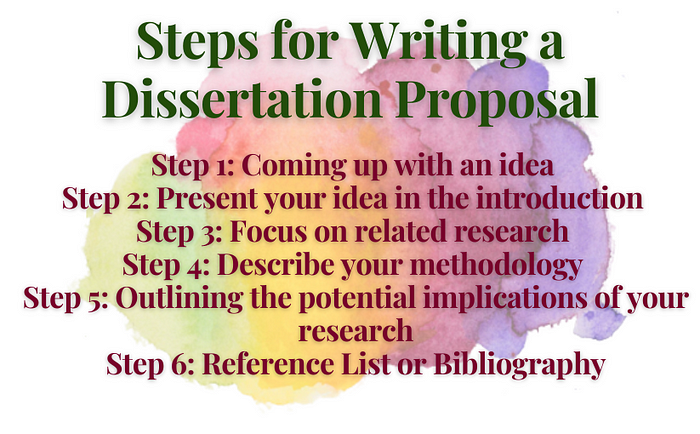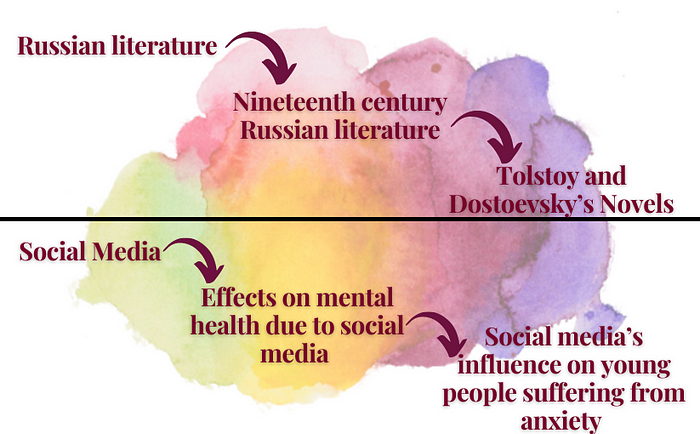Step-by-step guide for writing a dissertation proposal

It might be difficult to work on a dissertation. Dissertations are a big task, whether it’s your first or tenth. After that, there’s the preparation. This is when the proposal enters the picture. It is the first step in the process of writing a dissertation. This is where you should start if you ever have to write a dissertation.
What is a dissertation proposal?
It’s a proposal for an innovative research study, as the name suggests. It serves as a blueprint for the entire project, outlining what the project is, why you chose it, and how you plan to complete it. If you’re preparing a request for funding, it’s essential to be as specific as possible about your research goals.
During the research process, you may find yourself deviating from what you wrote in the proposal. That’s fine, too, because the proposal serves as the first draft of your research proposal. Deviation occurs as a result of trial and error, which is perfectly acceptable in research. It’s fine if you haven’t worked out all the details yet!
The originality of your study concept, its larger significance in your chosen subject, and the research questions themselves are all things you must be certain about.
How long should a dissertation proposal be?
There are no strict guidelines when it comes to how long a dissertation proposal should be. However, you should check to see whether your university has any page length or word count restrictions.
It’s considerably more important for you to draw out a plan. The number of words is less important, but make sure it is concise and clear. Dissertation proposals are typically between 15 and 20 pages long. Almost all of them are over 10 pages long.
Steps for writing a dissertation proposal:

1. Coming up with an idea
It’s essential to come up with a good dissertation idea before writing your proposal.
Find a topic in your field that fascinates you and conduct some basic research on it. What are the key aspects that other researchers are concerned about? What do they recommend for future research, and what do you think is a particularly interesting gap in the field?
Consider how to narrow down and structure your idea once you’ve come up with one. Don’t be overly ambitious or vague with your dissertation topic; it must be detailed enough to be feasible.
Move from a broad range of interest to a specific niche:

2. In the introduction, you should present your idea
A dissertation proposal, like most academic papers, begins with an introduction. This is where you explain your research topic, give some background information, and most importantly, present your goal, objectives, and research question (s).
Hook
Try to go to the core of your chosen topic: What is at stake in your research? What makes it interesting? Don’t get carried away with generalizations or grand statements.
Context
You may offer extra background and context if your research area is clear. What does the reader need to know in order to understand the questions you’ve proposed? What is the current state of study on this subject, and how will your dissertation contribute to the field?
If you’re including a literature review, don’t go into too much detail at this stage; instead, offer the reader an overview of the debates you’re addressing.
Aims
This leads to the most important section of the introduction: your aim, objectives, and research question (s). These should be easily recognized and stand out from the rest of the content — for example, you might use bullet points or a strong font to do so.
Make sure your research questions are specific and workable, and that you can answer them within the scope of your dissertation. Avoid being too broad or having too many questions.
Keep in mind that the goal of a dissertation proposal is to convince the reader that your research is valuable and feasible.
3. In the literature review, we looked at related research
Now that you’ve decided on a topic, it’s time to look into existing research on similar ideas. This is important since it reveals what has been missing from other research in the subject and ensures you are not asking a question that has already been answered.
You’ve undoubtedly done some preliminary reading already, but now that your topic is more clearly defined, you’ll need to analyze and evaluate the most relevant sources in your literature review.
You should summarize the findings of previous researchers and remark on any gaps or problems in their study in this section. There may be a lot of research to discuss, so utilize paraphrasing to keep your writing concise.
The aim is to determine findings and theories that will inform your own research, as well as gaps and limitations in previous research that your dissertation may address.
4. Describe your methodology
Then you’ll go through your proposed methodology, including the specific things you want to do, the structure of your study, and the data collection and data analysis methods you’ll apply.
In this part, you should be quite specific — you need to convince your supervisor that you’ve thought through your approach to the research and are capable of carrying it out. Depending on your topic of study, this part will take on a different look and length.
You may be working on empirical research, collecting data and uncovering new information, or theoretical research, trying to build a new conceptual model or add nuance to an existing one.
Both approaches are often used in dissertation research, however the content of your methodology section will differ depending on how important each approach is to your dissertation.
Empirical Research
In order to answer your research questions, empirical research involves gathering new data and analyzing it. It might be quantitative (numbers-focused), qualitative (words and meanings-focused), or a combination of the two.
When conducting empirical research, it’s critical to spell out exactly how you’ll get your data:
- Will you conduct surveys? Is this a lab experiment? Interviews?
- What factors are you going to measure?
- What method will you use to choose a representative sample?
- What measures will you take to ensure that individuals who participate in your research are treated ethically?
- What tools (both conceptual and physical) would you use, and why will you do so?
Other research can be cited here if necessary. You can mention a text describing the advantages and proper use of a particular research method or tool when you need to support your choice of that method.
Don’t go overboard; you don’t need to reiterate the whole theoretical literature, only the parts that are relevant to your choices.
Moreover, your research will require the analysis of data once it has been collected. Even if you don’t know what the data will look like yet, it’s important to know what you’re searching for and what methods you’ll use to get it (e.g. statistical tests, thematic analysis).
Theoretical Research
You can also do theoretical research without collecting original data. In this case, your methodology section will be more focused on the theory you want to use in your dissertation: relevant conceptual models and the approach you plan to follow.
A literary analysis dissertation, for example, seldom requires the collection of fresh data, but it is still important to describe the theoretical approach to the text(s) under consideration, as well as which parts of the text(s) you will focus on.
You can use the same theorists that you discussed in the literature review here. In this situation, the focus is on how you intend to incorporate their contributions into your own study.
5. Outlining the potential implications of your research
In most cases, you’ll end your dissertation proposal with a section that explains what you expect to accomplish with your study.
You certainly can’t be too sure, you don’t yet know what your findings and conclusions will be. Instead, you should discuss your dissertation’s expected implications and contribution to knowledge.
To begin, think about the implications of your research. Are you willing to:
- Develop or test a theory?
- Provide governments or companies with fresh information?
- Challenge a commonly held belief?
- Make a suggestion for a specific process improvement?
Describe the intended result of your research, as well as its theoretical or practical impacts of it.
Finally, it’s a good idea to conclude briefly the contribution to the knowledge you intend to make: the specific question(s) you hope to answer and the gap in existing knowledge that the answer(s) will fill.
6. Reference list or Bibliography
It’s crucial, as with any academic writing, that your dissertation proposal effectively mentions all of the sources you’ve used. At the conclusion of your proposal, you must add a properly formatted reference list or bibliography.
Different institutions recommend different reference styles; some of the most popular are Harvard, Vancouver, APA, and MHRA. If your department doesn’t have any specific guidelines, choose a style and adhere to it consistently.
Only the sources you referenced in your proposal are included in a reference list. A bibliography, on the other hand, is slightly different in that it can include any source you used to prepare the proposal, even if you didn’t include it in the text. A bibliography in a dissertation proposal may include important materials that you haven’t read yet but plan to utilize during the research process.
Consult your supervisor to choose which type of bibliography or reference list to include.
Conclusion
So, there you have it! A detailed step-by-step guide on how to write a dissertation proposal. We hope you found this guide to be useful and that it sets you on the way to writing an interesting dissertation!
We’ve also put together a checklist for you to use to evaluate if your dissertation proposal meets your university’s conventions and guidelines.
While you’re at it, keep an eye on our blog for detailed guidelines and ideas that will assist you throughout your dissertation writing process. Visit our website to know more! -Click Here!
-Isabell S.

